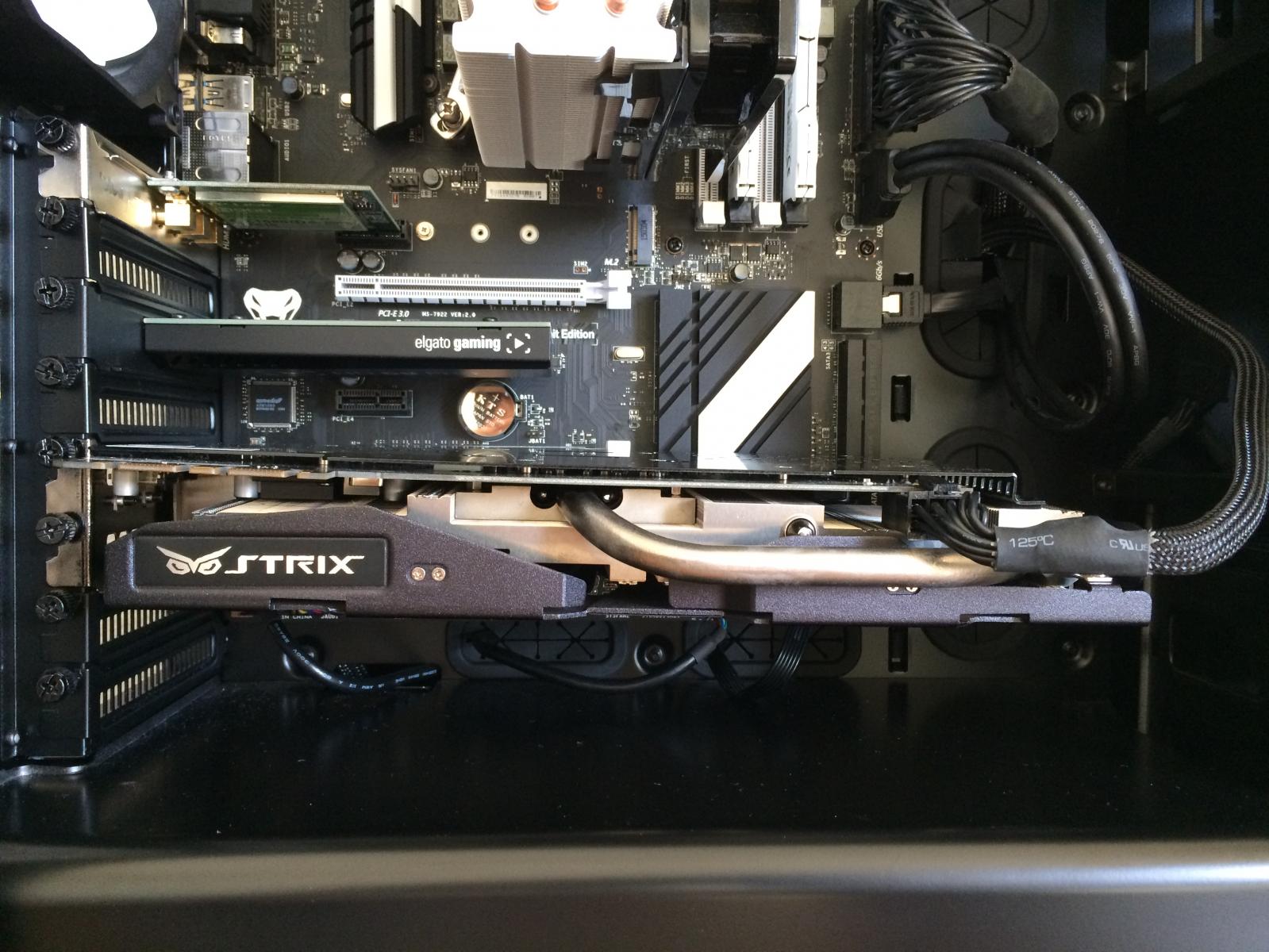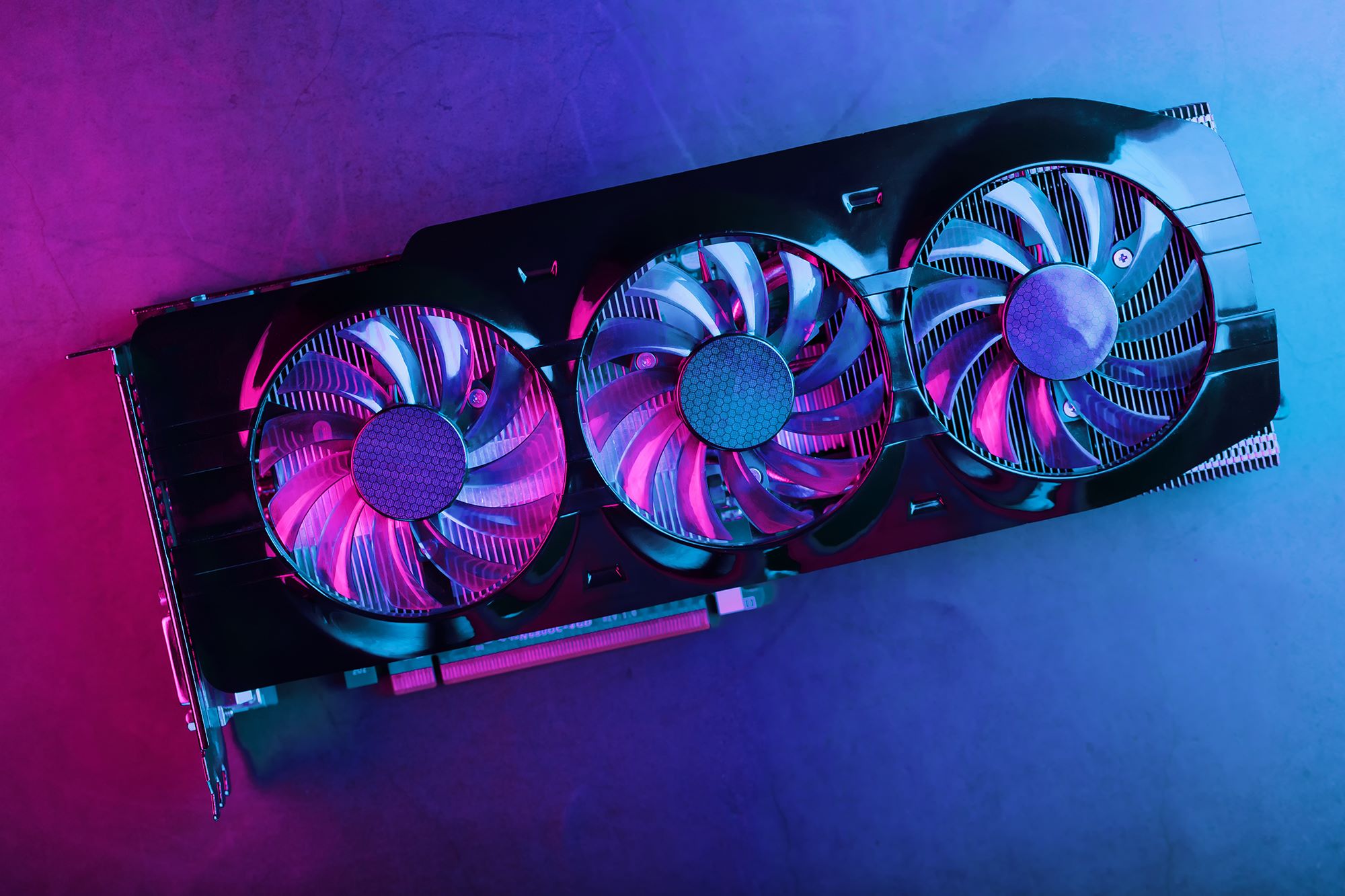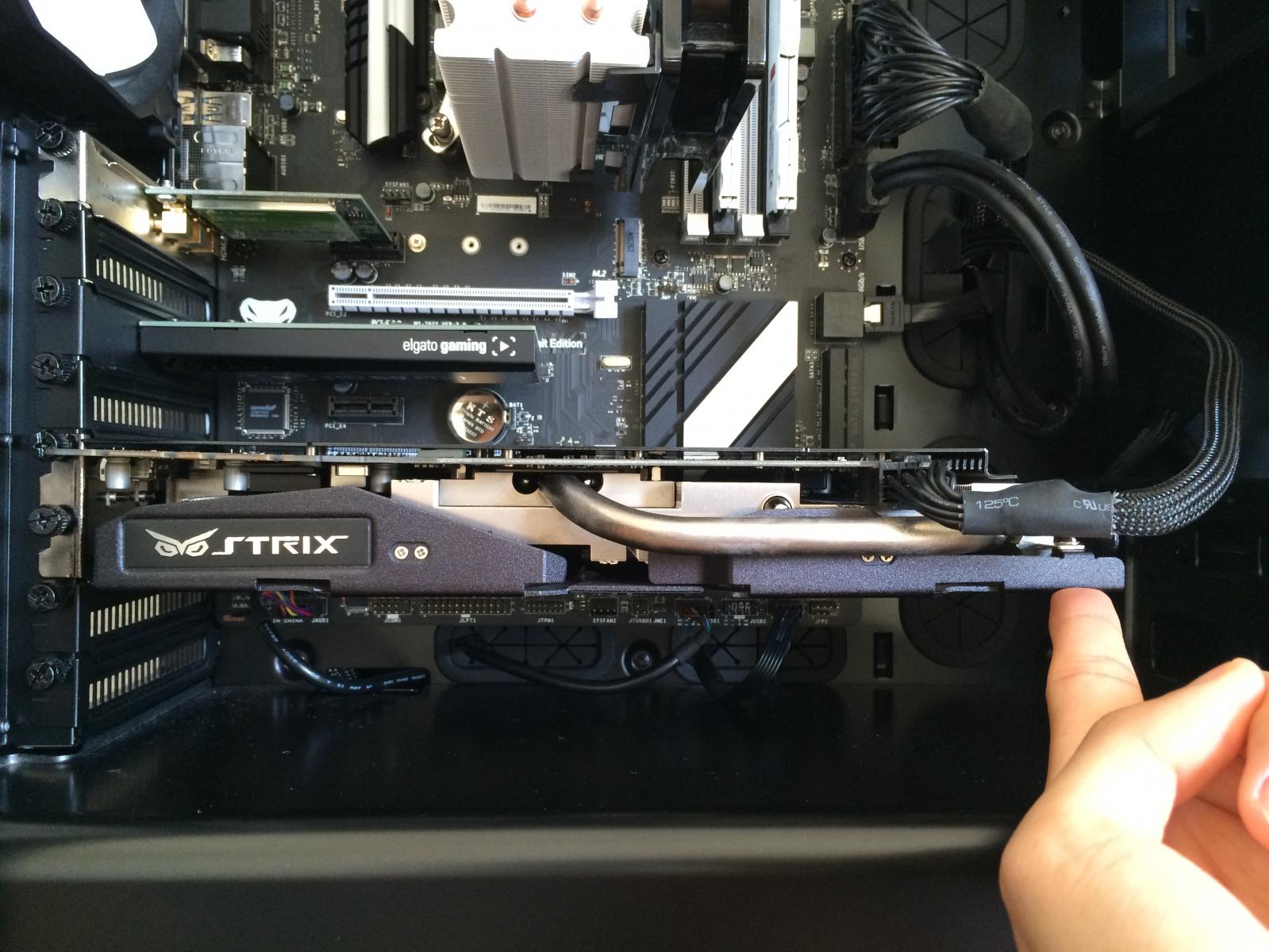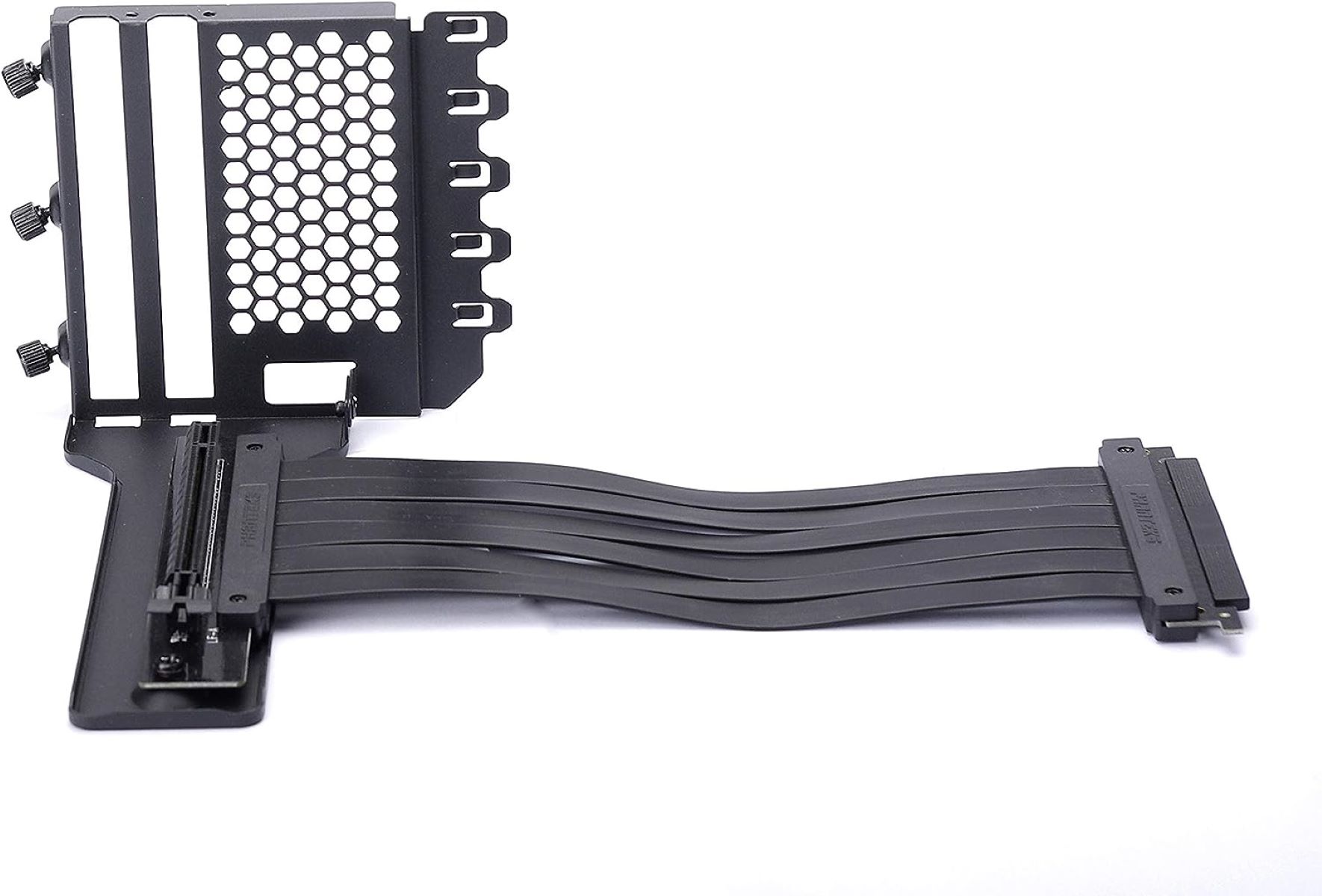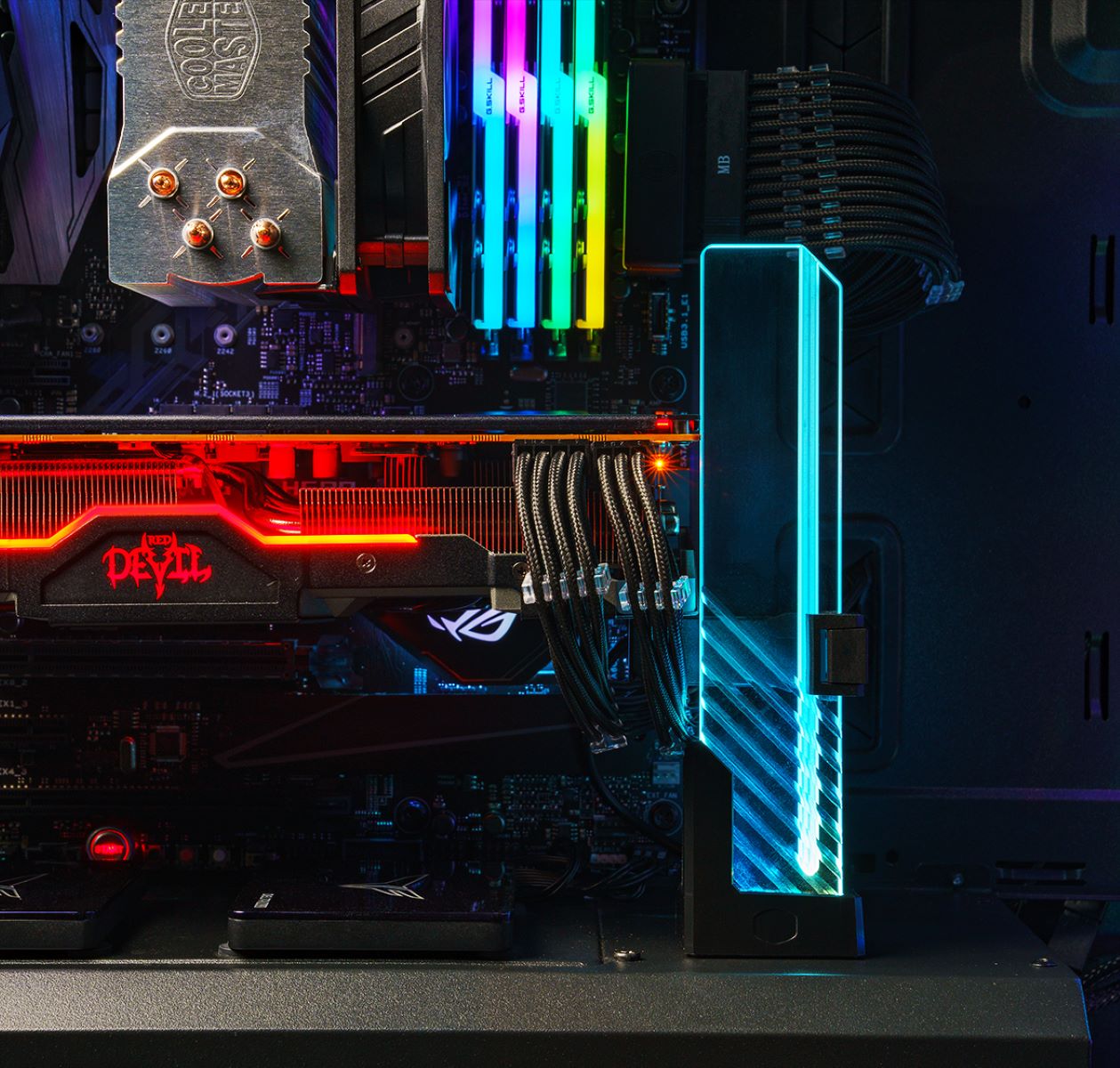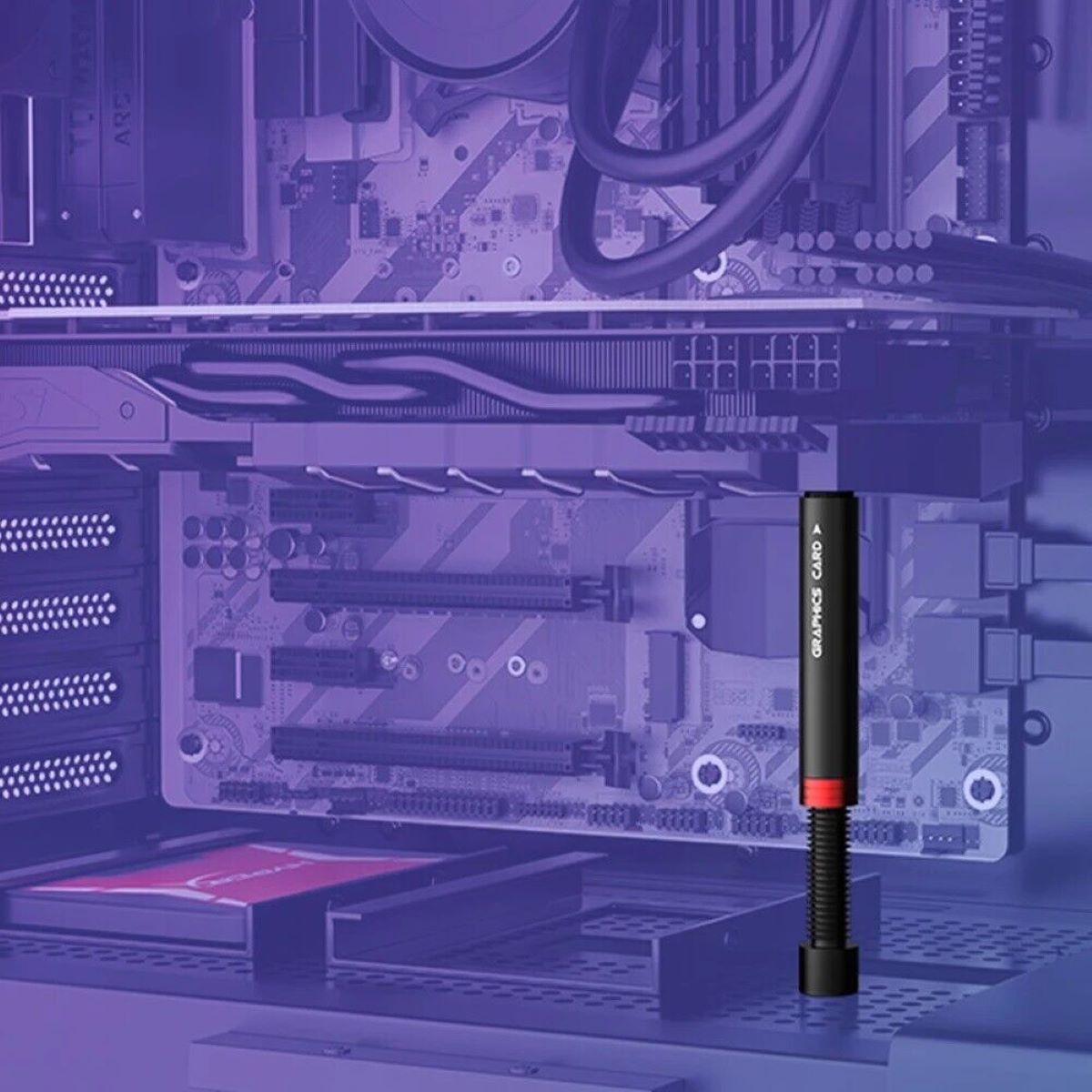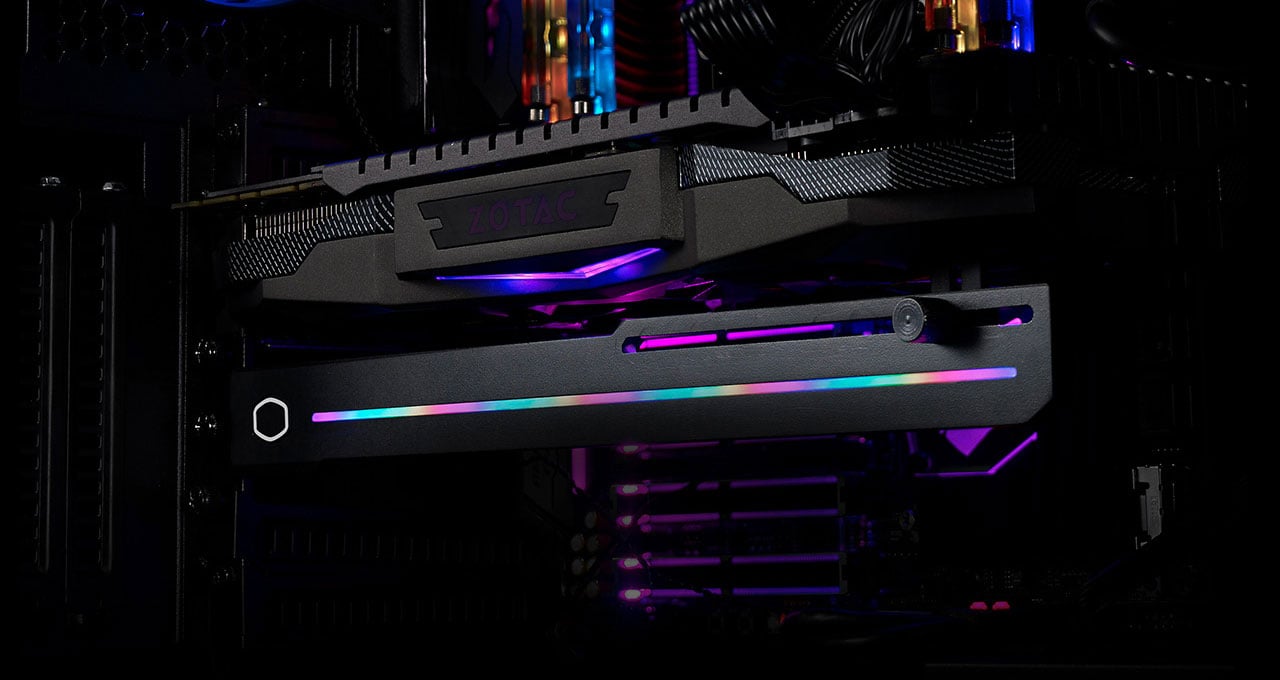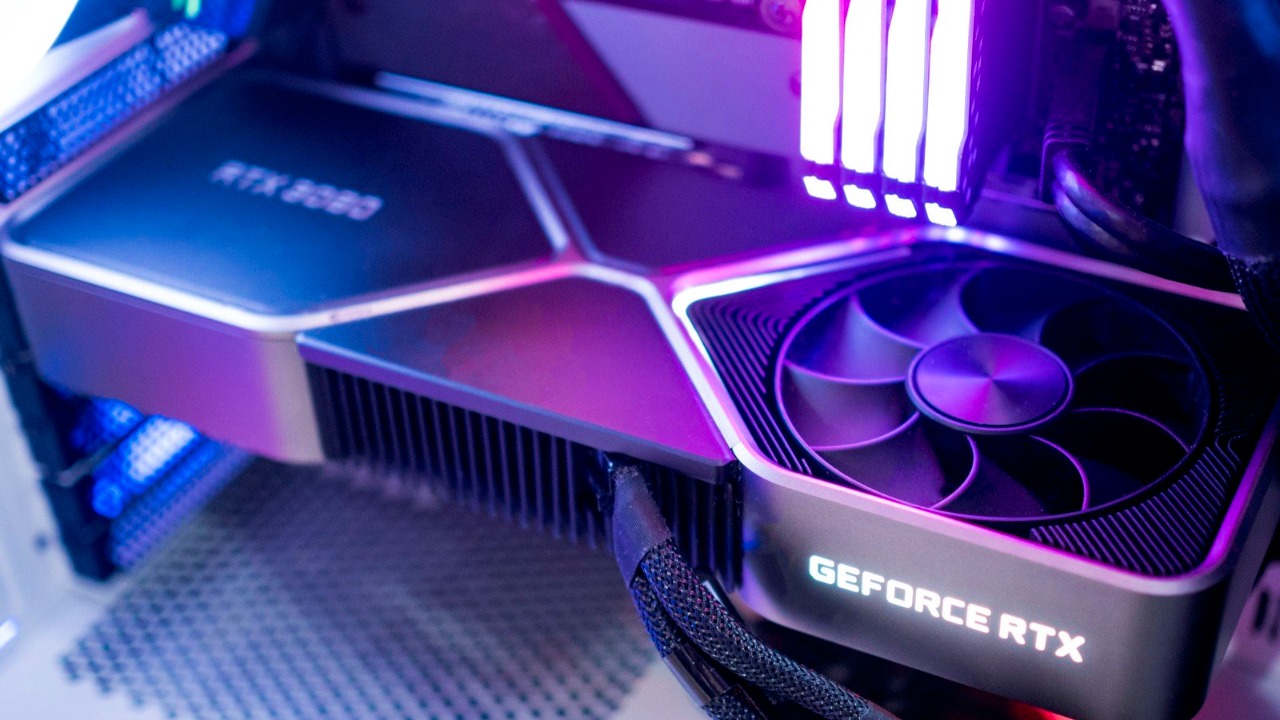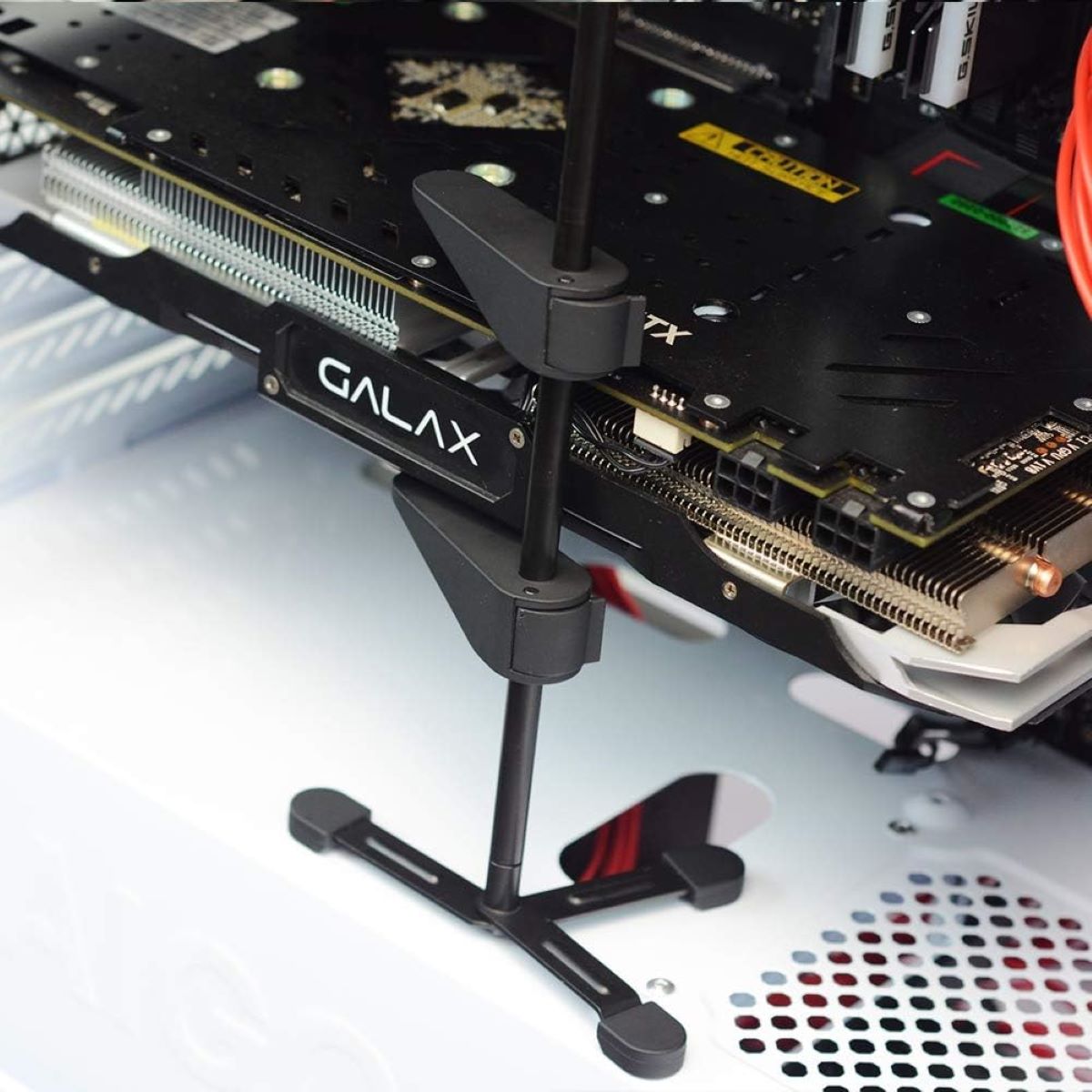Introduction
A graphics card is an essential component in any high-performance computer system, especially for gamers and professionals who rely on intense graphics processing. However, over time, it’s not uncommon for graphics cards to start drooping or sagging. This can be concerning for many reasons, including potential damage to the card, strain on the motherboard, and the overall aesthetics of your PC build.
Graphics card sag occurs when the weight of the card starts to bend or pull down on the PCIe slot, causing it to tilt or sag downward. This is usually caused by the weight of the card itself, as many high-end graphics cards are large and come with hefty cooling solutions, such as massive heatsinks or multiple fans.
The consequences of graphics card sag can range from minor annoyances to severe issues. One of the most immediate concerns is the strain that sagging puts on the PCIe slot and the motherboard. Over time, this can weaken the connection between the card and the slot, leading to performance issues or even complete failure. Additionally, sagging graphics cards can interfere with other components, such as blocking airflow or causing clearance issues with adjacent PCIe slots.
Luckily, there are several effective methods to prevent graphics card sag and maintain the integrity of your system. In this article, we will explore these methods, from using GPU braces and support brackets to vertical graphics card mounts. We will also discuss some DIY solutions that you can employ if you’re on a budget or prefer a more customized approach. By employing these preventative measures, you can ensure the longevity of your graphics card and maintain the overall aesthetics and performance of your PC build.
What causes graphics card sag?
Graphics card sag occurs when the weight of the card starts to pull down on the PCIe slot, causing it to tilt or sag downward. While there can be multiple factors contributing to this issue, the primary cause of graphics card sag is the sheer weight of the card itself.
Modern graphics cards, especially high-end models, often come with large heatsinks, multiple fans, and other robust cooling solutions. These components are necessary to dissipate the heat generated by the powerful GPU. However, they also contribute to the overall weight of the graphics card.
Additionally, the size and length of the graphics card can also contribute to sagging. Longer cards, such as those with dual or triple fans, have more weight distributed along the length, increasing the chances of sag. Moreover, certain models with particularly heavy heatsinks or shrouds can exacerbate the problem.
Another contributing factor to graphics card sag is the design of the PCIe slot itself. The slots are typically made of plastic and are not inherently sturdy. Over time, continuous pressure from the weight of the card can cause the slot to weaken, leading to increased sagging. Additionally, some motherboards have their PCIe slots positioned further away from the motherboard’s main support, making them more prone to sagging.
Lastly, improper installation or handling of the graphics card can also contribute to sagging. If the card is not properly secured or tightened into the PCIe slot or if it is mishandled during installation, it can create additional strain on the slot and increase the chances of sagging.
Understanding the causes of graphics card sag is crucial in implementing effective prevention measures. By addressing these factors, you can minimize the risk of sagging and ensure the longevity and optimal performance of your graphics card.
The consequences of graphics card sag
Graphics card sag may seem like a minor issue, but it can lead to a range of consequences that can affect the performance, stability, and longevity of your system.
One of the immediate concerns is the strain that sagging puts on the PCIe slot and the motherboard. The weight of the graphics card can cause the slot to bend or warp, potentially compromising the connection between the card and the slot. This can result in performance issues, such as intermittent connection problems, reduced bandwidth, or even complete failure of the graphics card.
Sagging graphics cards can also create clearance issues with adjacent components, particularly if they are positioned close to the card. This can restrict airflow and lead to inadequate cooling, potentially causing overheating and reduced performance. In some cases, the sagging card may even come into contact with other components, resulting in physical damage.
Moreover, aesthetics can also be impacted by graphics card sag. A sagging card can disrupt the clean and organized look of your PC build, detracting from the overall visual appeal. This is especially true if you have put effort into creating a visually pleasing and well-cable-managed system.
Furthermore, the longevity of the graphics card itself can be compromised due to sagging. The continuous strain put on the card and its components can lead to wear and tear over time. This can result in reduced performance, increased heat generation, higher fan speeds, and a shorter lifespan for the card.
It’s important to note that the consequences of graphics card sag may vary depending on the severity and duration of the sag. While minor sagging may not have an immediate impact, over time, the strain on the PCIe slot and the card can worsen, leading to more significant problems.
To mitigate these consequences, it’s crucial to take proactive measures to prevent graphics card sag. By utilizing the methods and solutions discussed in the following sections, you can ensure the stability, performance, and longevity of both your graphics card and your entire system.
How to prevent graphics card sag
Preventing graphics card sag is essential to maintain the integrity and performance of your system. There are several effective methods and solutions available to help you prevent or minimize graphics card sag. Let’s explore them below:
- Method 1: Using a GPU brace or support bracket: One of the simplest and most effective methods is to use a GPU brace or support bracket. These are specially designed brackets that you can attach to your graphics card and the case to provide additional support. They help to distribute the weight of the card evenly and prevent it from sagging. GPU braces are available in various designs and materials, ensuring compatibility with different case sizes and graphics card models.
- Method 2: Using a vertical graphics card mount: Another popular solution is to use a vertical graphics card mount. This involves repositioning the graphics card vertically instead of the traditional horizontal placement. Vertical mounts provide additional support to the card and minimize the chances of sagging. They also offer the benefit of showcasing the graphics card as a centerpiece, enhancing the aesthetics of your PC build. However, it’s essential to ensure that your case has sufficient space for a vertical mount and that it supports the necessary mounting hardware.
- Method 3: DIY solutions for graphics card sag: If you prefer a more budget-friendly or customizable approach, you can consider various DIY solutions. For example, you can use zip ties or fishing lines to create makeshift support structures for the graphics card. You can attach these lines to the top of the case or any other stable point above the card to lift and support it. Another option is to use LEGO bricks or wooden blocks strategically placed beneath the sagging portion of the card to provide additional support.
It’s important to note that regardless of the method or solution you choose, it’s crucial to ensure that the graphics card is securely and properly installed in the PCIe slot. Make sure that it is firmly fastened and that there is no movement or play in the card. This will help reduce strain on the slot and minimize the chances of sagging.
By implementing these preventative measures, you can effectively mitigate graphics card sag and maintain the stability, performance, and aesthetics of your system. Choose the method that best suits your needs, budget, and preferences, and enjoy a worry-free PC gaming or professional computing experience.
Method 1: Using a GPU brace or support bracket
One of the most straightforward and effective methods to prevent graphics card sag is by using a GPU brace or support bracket. These accessories are designed explicitly to provide additional support to the graphics card, preventing it from sagging and distributing its weight more evenly.
GPU braces are typically made of strong and durable materials such as metal or plastic, ensuring stability and long-lasting support. They come in various shapes and sizes to accommodate different case sizes and graphics card models.
To use a GPU brace or support bracket, follow these simple steps:
- Identify the sagging portion of your graphics card. This is usually towards the end of the card where the bulk of the weight is concentrated.
- Remove your computer’s side panel to access the interior.
- Attach one end of the GPU brace to a stable point inside the case, such as a vacant PCIe slot cover or a mounting point provided by the case manufacturer.
- Position the other end of the GPU brace beneath the sagging portion of the graphics card, ensuring it provides support and lifts the card evenly.
- Securely fasten the GPU brace or support bracket in place using the provided mounting hardware or screws.
Once the GPU brace is properly installed, it will hold the graphics card in place, preventing it from sagging over time. This ensures stability and reduces strain on the PCIe slot and the motherboard.
It’s important to ensure that the GPU brace is compatible with your specific case and graphics card. Some GPU braces are adjustable or have multiple mounting points for added flexibility. Consult the manufacturer’s instructions or product specifications to ensure proper installation and compatibility.
Using a GPU brace or support bracket is a relatively simple and cost-effective solution to prevent graphics card sag. It provides reliable support and helps maintain the integrity of your system, ensuring optimal performance and longevity for both your graphics card and your entire PC build.
Method 2: Using a vertical graphics card mount
If you’re looking for a solution that not only prevents graphics card sag but also adds a unique aesthetic touch to your PC build, using a vertical graphics card mount is an excellent option. This method involves repositioning the graphics card vertically instead of the traditional horizontal placement.
A vertical graphics card mount allows you to showcase your graphics card as a centerpiece, making it a visually striking element of your PC build. It provides additional support to the card, minimizing the chances of sagging and distributing the weight more evenly.
To utilize a vertical graphics card mount, follow these steps:
- Ensure that your case supports a vertical mounting option. Some cases have built-in vertical GPU slots, while others may require additional brackets or modifications.
- Remove your computer’s side panel and locate the PCIe slots.
- Disconnect and remove the graphics card from its current horizontal position.
- Attach the mounting bracket or adapter provided with the vertical mount kit to the graphics card. The precise method may vary depending on the specific mount and card.
- Insert the graphics card into the vertical PCIe slot, ensuring a secure connection.
- Secure the graphics card in its vertical position using the provided screws or fastening method.
Once the graphics card is properly placed in the vertical slot, it will be well-supported, reducing the strain on the PCIe slot and minimizing the chances of sagging.
It’s important to note that not all cases support vertical mounting, and some may require modifications or additional hardware to accommodate a vertical GPU. Additionally, make sure that your power supply cables and other components have enough clearance in the case when positioning the graphics card vertically.
Using a vertical graphics card mount not only prevents sagging but also adds a visually appealing element to your PC build. It allows for better showcasing of your graphics card and can enhance airflow within the case, potentially leading to improved cooling performance.
Consider the compatibility and dimensions of your graphics card and case before opting for a vertical mount. With the right setup, you can achieve both functional support and an eye-catching display for your graphics card.
Method 3: DIY solutions for graphics card sag
If you’re on a budget or prefer a more customized approach, there are several DIY solutions available to prevent graphics card sag. These solutions may require some creativity and resourcefulness, but they can be highly effective in providing additional support and reducing sagging. Here are a few DIY ideas you can consider:
- Zip ties or fishing lines: One simple and inexpensive option is to use zip ties or fishing lines to create makeshift support structures. Attach one end of the zip tie or fishing line to a stable point inside the case, such as a cable management hole, and loop it around the sagging portion of the graphics card before securing the other end. By adjusting the tension, you can lift the card and provide the necessary support to prevent sagging.
- LEGO bricks or wooden blocks: Another DIY solution involves using LEGO bricks or wooden blocks to create support platforms for the sagging portion of the graphics card. Place these blocks strategically beneath the card, lifting it and distributing its weight more evenly.
- 3D-printed brackets: If you have access to a 3D printer or a local maker space, you can design and print custom brackets specifically tailored to your graphics card. These brackets can provide targeted support to the sagging areas, helping to prevent sagging effectively.
When using DIY solutions, ensure that the support is stable, secure, and does not obstruct other components or interfere with airflow within the case. Regularly inspect and readjust the DIY supports to ensure they continue to provide adequate support over time.
While DIY solutions may require more effort and creativity, they can offer a cost-effective and personalized way to prevent graphics card sag. However, it’s essential to note that these solutions may not be as robust or aesthetically pleasing as commercially available options. If aesthetics or maximum support is a priority, consider investing in a dedicated GPU brace or support bracket.
Overall, DIY solutions provide flexibility and customization to address graphics card sag without breaking the bank. With a little ingenuity and resourcefulness, you can ensure the stability and longevity of your graphics card, even on a limited budget.
Conclusion
Graphics card sag can be a common issue that plagues many PC enthusiasts and builders. However, with the right preventative measures, you can effectively minimize or eliminate the chances of sagging and maintain the integrity and performance of your system.
Throughout this article, we have explored various methods to prevent graphics card sag. Using a GPU brace or support bracket offers a simple and effective solution, providing additional support and distributing the weight of the card evenly. Vertical graphics card mounts not only prevent sag but also add a stunning visual element to your PC build. DIY solutions, such as zip ties, LEGO bricks, or 3D-printed brackets, can be cost-effective alternatives for those on a budget or seeking a personalized approach.
Regardless of the method you choose, it’s vital to ensure the proper installation and secure fastening of the graphics card in the PCIe slot. This will reduce strain and minimize the risk of sagging.
By preventing graphics card sag, you can avoid potential damage to your card and motherboard, ensure optimal performance, improve airflow and cooling, and maintain the overall aesthetics of your PC build.
We encourage you to consider your specific needs, budget, and preferences when selecting a method to prevent graphics card sag. Whether you opt for a commercial solution or a DIY approach, the key is to provide adequate support and maintain the longevity and performance of your graphics card.
Remember, a well-supported graphics card not only ensures the smooth running of your system but also enhances your gaming or professional computing experience. So, take the necessary steps to prevent graphics card sag and enjoy a hassle-free PC journey.







